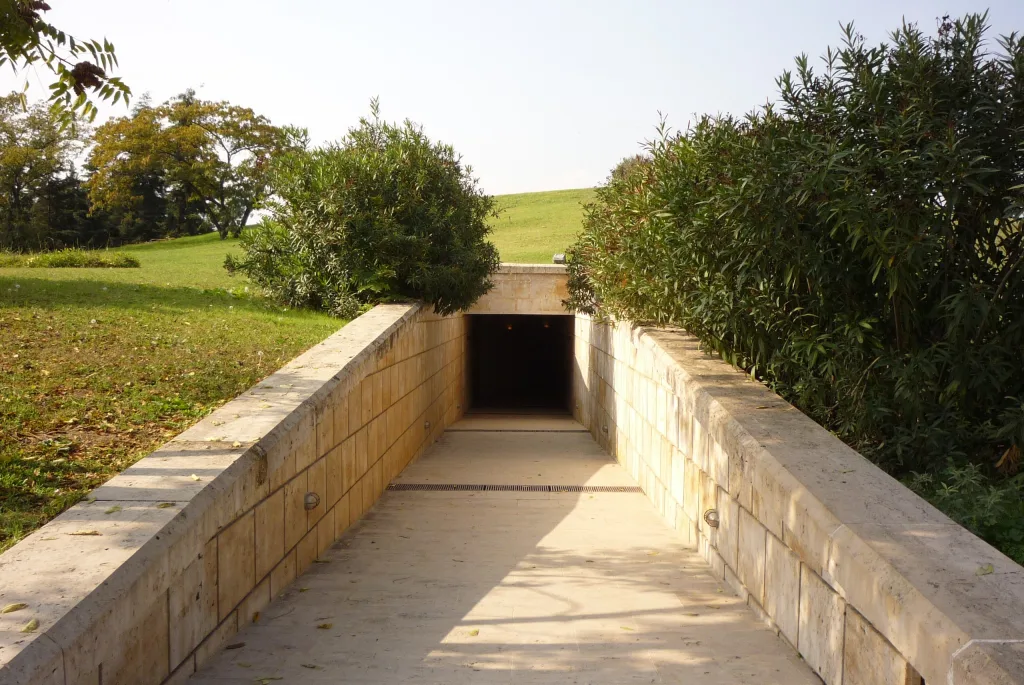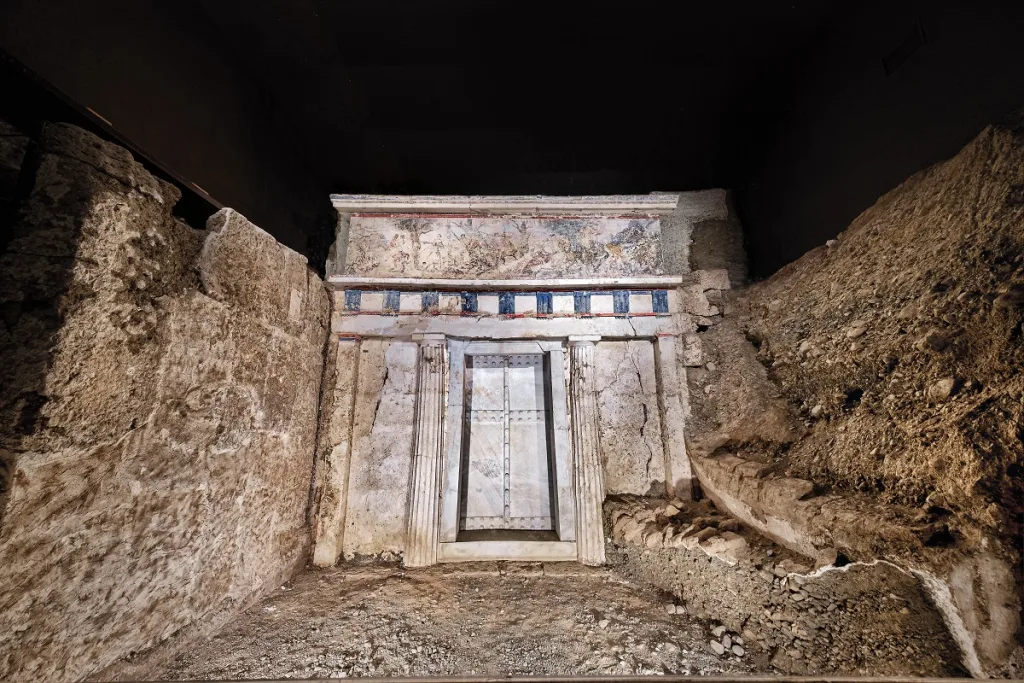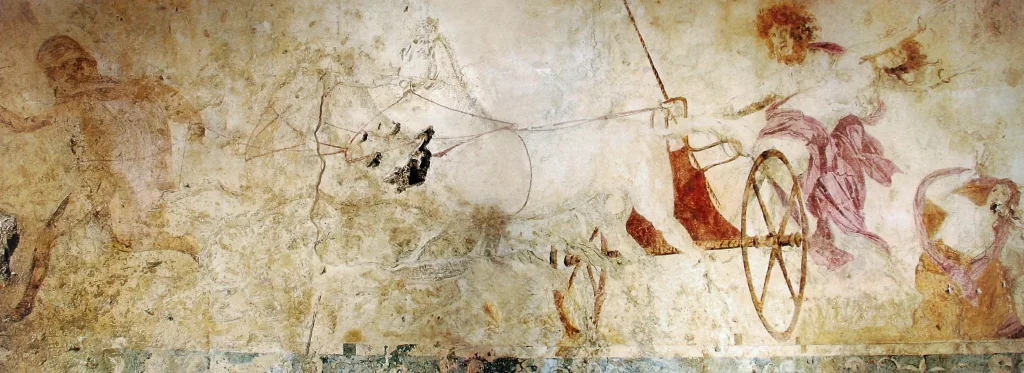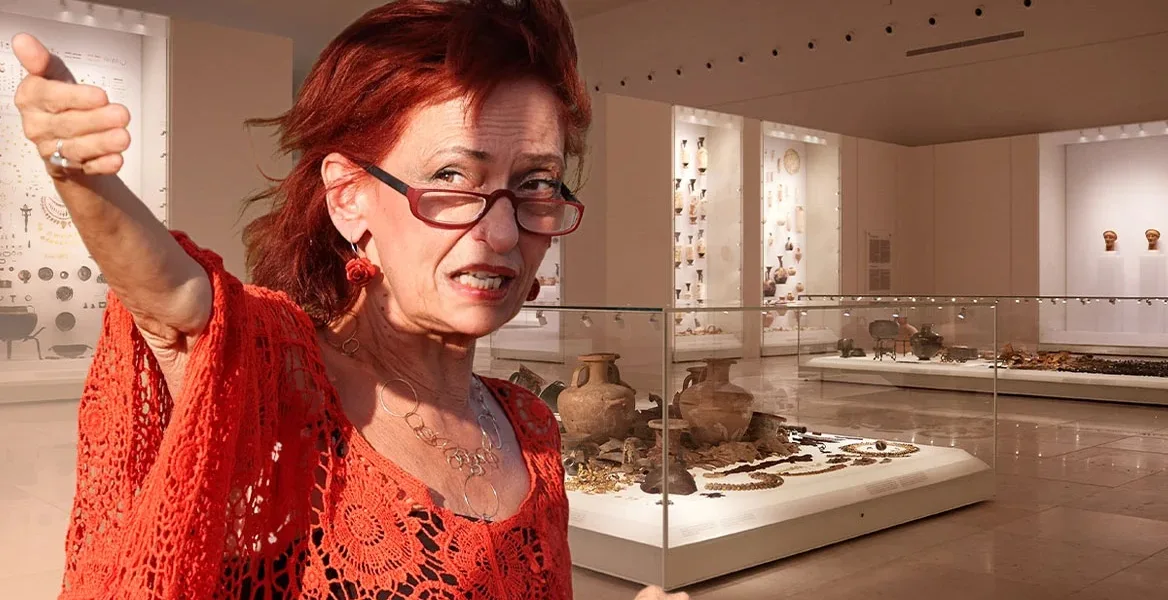A position opposite to that of Helene Glykatzi-Ahrweiler, who expressed the certainty that Alexander the Great is buried in Vergina, was taken by the head of the Ephorate of Antiquities of Imathia, Angeliki Kottaridi.
Angeliki Kottaridi, who has also been a student of Manolis Andronikos, speaks to ERT3 and explains that "in science, we have two categories."
"Data and evidence. In archaeological science, these exist, while there are also the interpretations of the elements. In between, there are cases that can be proven or rejected. We work with evidence, not with theoretical approaches," she said.
"I will not enter into the discussion with Mrs Ahrweiler; everyone has the weight of their opinion, but we do not talk with theories but with data," the archaeologist continued.
"We have a tomb with a dead man in the chamber and a woman in the vestibule. The bones are there; we've known them since 1977, and they've been studied many times by anthropologists.
"What you can easily determine from the study of the bones is the age and gender of the deceased. The deceased in question is in his fifth decade of life and is around 45, somewhere between 43-47."
"It is ruled out by anthropologists to be between 30-33. We're talking about a 15-year difference that's measurable. So it cannot be Alexander, who died before he was 33 years old.
"We would be very happy to have him, to find his bones, but we have his memory alive, and the two oldest depictions of him preserved, the only ones we are sure he has seen himself.
"The very small, 2.5 cm long head from the hunting animal and its image from the fresco. Alexander himself built the tomb of Philip II; he buried his father. The ruler's funeral is a political event, as the next situation is established from the funeral."

When asked how it is proven that Philip II is in the tomb, Ms Kottaridi explained: "It is proven to be Philip through a series of combinatorial interpretations of events.
"He is definitely a king, and when Andronikos was saying this, he didn't have as much evidence as we have today. Since the teacher died, we have dug another 2,000 graves in Aiges.
"We have a lot of evidence that proves the original hypothesis, that the deceased was burned next to it, we have the remains of the fire, we have the golden wreath that started to melt and some acorns were found in the fire.
"His bones were put in the gold box, the gold box in the marble one and the tomb was closed. Thus, it cannot be ruled out that the dead man is Philip the Aridaeus, who was executed by Olympias and later recovered as bones, not a body, burned by Cassander at Aegis.
"He was also close to 40. The archaeologist is not like the historian. The historian makes theories. The archaeologist can also theorise, but things can backfire on you. It is absolutely certain that he is Philip II.
"There were various reactions, purely scientific, with other archaeologists, who said it was Aridaeus and others that were, in fact, motivated because, at that time, we also had the issue of the Macedonian.
"It was a conscious big effort by foreign centres to cut off the Macedonians from the Greek body and to document Neogene formations," she concluded.

Helene Glykatzi-Ahrweiler's arguments
It is recalled that, in her recent statements, Mrs Ahrweiler cited those arguments, which, in her estimation, advocate the position that Alexander the Great and not Philip II is buried in Vergina, questioning the research and the findings by Manolis Andronikos.

As such, she mentioned the ivory statue of Alexander that has been found, the desire of Alexander the Great to be buried in his homeland, the height of the deceased in the tomb which, according to her, is more in line with that of Alexander, the representation on the frieze showing an action, which to be recorded must have previously occurred, the time gap from the burial in the spot we know, until the mausoleum was built and the finding in Vergina's tomb of hudite, a mineral from Egypt.


